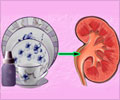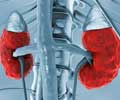Introduction
With the alarming rise in pollution in most cities worldwide, the quality of air is increasingly becoming unsafe for humans. Air pollution can cause or worsen pre-existing lung diseases such as asthma, obstructive airway disease, and is also associated with an increased risk of stroke, cancer and heart disease. However, a recent study conducted by scientists at Washington University School of Medicine in St. Louis and the Veterans Affairs (VA) St. Louis Health Care System seems to suggest that air pollution could also cause kidney damage with renal failure.
Environmental Protection Agency (EPA) and NASA Observational Study
In this observational study, the scientists at Washington University worked closely with teams at the Veteran Affairs (VA) Clinical Epidemiology Center and analyzed VA data gathered by the National Aeronautics and Space Administration (NASA) and the Environmental Protection Agency (EPA) with regards to association between air quality and incidence of kidney disease.
Starting in 2004, nearly 2.5 million veterans were closely monitored for over 8 years. The findings of the study were published recently in the Journal of the American Society of Nephrology.
Important Findings
Following analysis of data, the team has concluded that nearly 45,000 newly diagnosed cases of kidney disease and about 2,400 new cases of kidney failure annually can be attributed to air pollution exceeding the prescribed safety limit of 12 micrograms per cubic meter of air.
"Data on the relationship between air pollution and kidney disease in humans has been scarce," said Ziyad Al-Aly, MD, the study's senior author and an assistant professor of medicine at Washington University. "However, once we analyzed the data, the link between air pollution and the development of kidney disease was clear."
How Does Air Quality Affect Kidney Health?
Fine particulate matter in the atmosphere is able pass through the lung-blood barrier into the bloodstream and are consequently subject to filtration by the kidneys.
- The kidneys filter the blood containing invisible dust particles, soot, smoke, liquid droplets and dirt from the blood to be excreted in the urine. However, prolonged exposure to such pollutants and harmful chemicals can cause damage to kidneys resulting in renal failure.
According to Al-Aly, "Human kidneys filter as much as 45 gallons of blood a day. They may be especially susceptible to the harmful effects of particulate matter in the blood."
Fine particulate matter less than 2.5 microns in diameter, referred to as PM2.5 have been found to be associated with kidney damage in mice.
"The higher the levels of air pollution, the worse it is for the kidneys," said Al-Aly, who is also the VA's director of clinical epidemiology in St. Louis. "However, no level is completely safe. Even at relatively low levels, there was a relationship between particulate matter concentrations below the EPA thresholds and kidney disease."
What is Fine Particulate Matter?
Particulate matter is a mixture of solids and liquid droplets suspended in the atmosphere. They are more likely to be present at higher levels when there is no wind with little scope for air mixing.
As stated earlier, these are particles less than 2.5 microns in diameter and more likely to pass via the lungs into the bloodstream and cause serious damage.
Outdoor sources of particulate matter
- Vehicular exhaust
- Construction equipment
- Burning of wood, coal and oil
- Forest fires
- Power plants
Indoor sources of particulate matter
- Tobacco smoke
- Cooking
- Burning oil lamps, candles
- Kerosene heaters

Other Implications of Air Pollution Associated Kidney Damage
- In otherwise healthy individuals, exposure to air pollution and associated decline in kidney function may not affect health significantly but in elderly patients with other co-morbidities such as diabetes and hypertension, kidney damage due to air pollution could be an additional risk factor for heart disease, increased mortality and morbidity.
- Also air pollution associated kidney damage might be one of the explanations for patients in whom no identifiable cause for kidney disease can be found.
“If you map the world and map what are the kidney disease hotspots, they significantly overlap with areas of high pollution,” said Al-Aly.
Kidney Disease in Areas with High Degree of Air Pollution
- India and China are among the countries with the highest degree of air pollution.
- In the US levels of outdoor air pollution have reduced, but still nearly half the population resides in industrialized towns, coal mining regions and farming communities with exposure to unsafe levels of air pollution.
- Southern California and large areas in the Northeast, South and Midwest are placed at the highest risk of kidney damage due to air pollution
"In our analyses, the risk of chronic kidney disease and its progression was most pronounced at the highest levels of fine particulate matter concentration," Al-Aly said. "This suggests further study is needed for a broader assessment of the global burden of kidney disease attributable to air pollution."
Health and General Tips to Reduce Air Pollution
It is possible to reduce our exposure to fine particulate matter even if not totally prevent by the following measures:
- Avoid smoking and exposure to passive smoke
- Convert garden waste to compost for plants instead of burning it
- Avoid or reduce the usage of wood stoves and fireplaces
- Use petrol instead of diesel as emission is lesser; replace old diesel engines with new ones periodically to reduce emissions
- People at risk should avoid outdoor pollution by staying indoors
- Avoid strenuous exercise in areas where fine particulate matter is high
- Persons at risk should wear face mask when going outdoors

In conclusion, although it is essential for governments across the world to crack the whip and enforce tough measures to reduce the alarming levels of air pollution, each one of us can contribute by making small changes in our lifestyle to make air quality safer and better for humanity.











